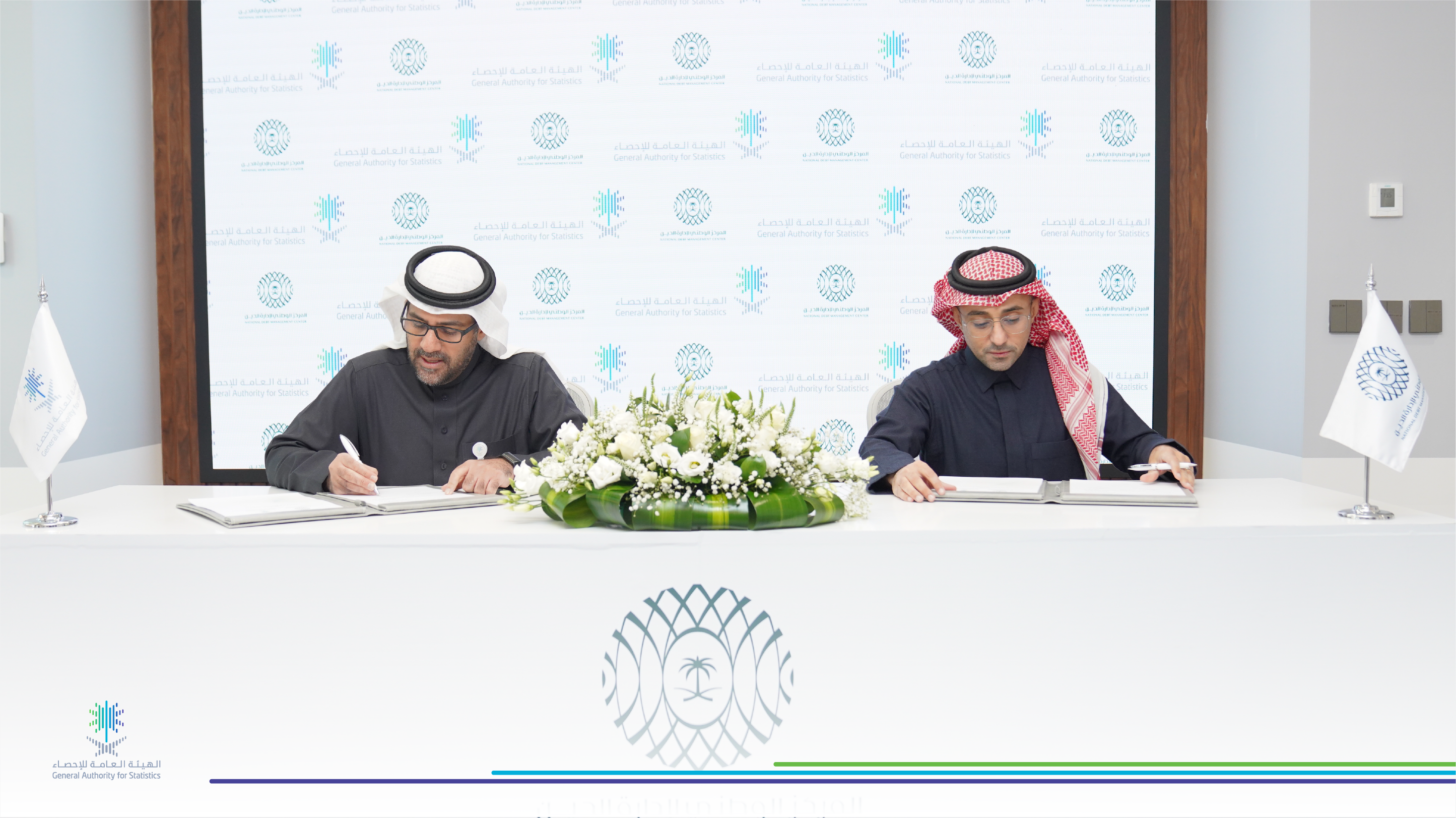GASTAT signs MoU with FSC to develop statistical products
03-01-2024
Dr. Fahad bin Abdullah Aldossari, the President of the General Authority for Statistics (GASTAT), met with businessmen from the private sector at the headquarters of the Federation of Saudi Chambers (FSC), in the presence of the Acting Secretary General of the Federation of Saudi Chambers, Mr. Waleed H. Alorainan. As part of the meeting, a memorandum of understanding (MoU) was signed to cooperate in the field of statistics and exchange of expertise between (GASTAT) and (FSC). The aim is to contribute to the development and enhancement of economic statistics that support decision-makers and policymakers in both government and private sectors.
During the meeting, the President of (GASTAT) discussed with businessmen and the private sector the pivotal role played by (GASTAT) in providing statistics, economic indicators, and other related information. The steps taken by (GASTAT) within its strategic transformation to develop its statistical products were also reviewed. Additionally, the role of the private sector in enhancing the efforts of (GASTAT) and the integration between them in developing economic indicators and statistical data, including data collection and analysis, was discussed.
The (MoU) emphasizes cooperation in the areas of exchanging expertise and information between the two parties to develop statistical work and programs aimed at raising awareness in private sector establishments about the role and importance of (GASTAT) in performing its national duties. This includes participation in statistical surveys, facilitating access to information, exchanging visits between experts and specialists in relevant statistical fields, and benefiting from databases and information in shared areas. It also includes organizing conferences, seminars, and workshops between the two parties.
The (MoU) was signed by Dr. Fahad Aldossari, the President of (GASTAT), and the Acting Secretary General of the Federation of Saudi Chambers, Mr. Waleed H. Alorainan, in the presence of several staff members from (GASTAT), (FSC), businessmen, and the private sector.
Dr. Fahad Aldossari emphasized that the meeting between (GASTAT) and the private sector comes within the framework of improving performance regarding the development of statistical products and indicators. It aims to identify the needs and opportunities of the private sector in the field of statistical information and data. He also emphasized the importance of integrated work between (GASTAT) and private sector partners, which positively reflects on the success of joint work and enhances cooperation in line with the development and change process that (GASTAT) is undergoing. Additionally, it aims to benefit from advanced statistical programs and products that increase business and investment opportunities in various fields.
From his side, Mr. Waleed H. Alorainan emphasized the importance of cooperation between (GASTAT)and the private sector, given the complementary roles between the two parties. Companies and institutions are the main source of data for GASTAT, while the statistics provided by GASTAT are among the most important sources relied upon by the business sector in studies, analysis, and strategic decision-making. He expressed his hope that this partnership would contribute to meeting the requirements of both parties and understanding the economic statistical developments and future trends for the development of statistical products and private sector opportunities that support the national economy, sustainable development, and the goals of Vision 2030.
It is worth mentioning that (FSC) acts as an umbrella for the business sector and chambers of commerce in the Kingdom. It represents them at the local and international levels and works to develop the role of the private sector in the national economy in coordination with government agencies. It also represents the sector in forums, events, and conferences, and participates in local and international economic decision-making. Additionally, it enhances the Kingdom's trade and investment relations with the world and supports the access of Saudi exports to foreign markets.





